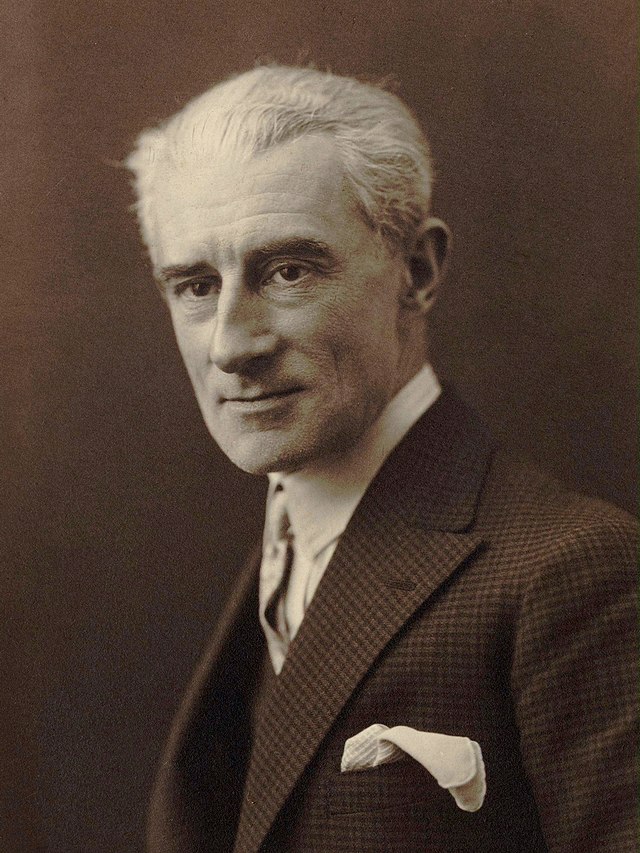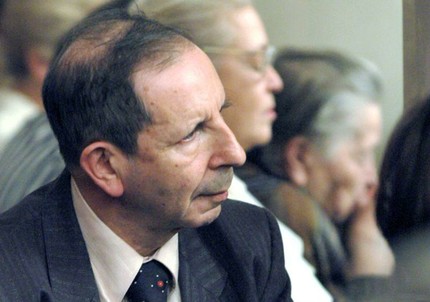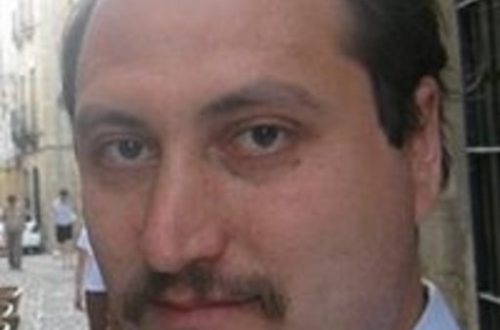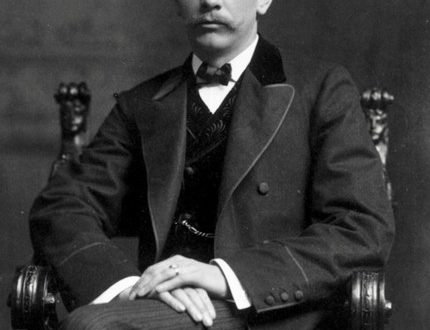
Maurice Ravel |
Contents
Maurice Ravel
Great music, I am convinced of this, always comes from the heart … Music, I insist on this, no matter what, must be beautiful. M. Ravel
The music of M. Ravel – the greatest French composer, a magnificent master of musical color – combines impressionistic softness and blurring of sounds with classical clarity and harmony of forms. He wrote 2 operas (The Spanish Hour, The Child and the Magic), 3 ballets (including Daphnis and Chloe), works for orchestra (Spanish Rhapsody, Waltz, Bolero) , 2 piano concertos, rhapsody for violin “Gypsy”, Quartet, Trio, sonatas (for violin and cello, violin and piano), piano compositions (including Sonatina, “Water Play”, cycles “Night Gaspar”, ” Noble and sentimental waltzes”, “Reflections”, the suite “The Tomb of Couperin”, parts of which are dedicated to the memory of the composer’s friends who died during the First World War), choirs, romances. A bold innovator, Ravel had a great influence on many composers of subsequent generations.
He was born in the family of the Swiss engineer Joseph Ravel. My father was musically gifted, he played the trumpet and flute well. He introduced young Maurice to technology. Interest in mechanisms, toys, watches remained with the composer throughout his life and was even reflected in a number of his works (let us recall, for example, the introduction to the opera Spanish Hour with the image of a watchmaker’s shop). The composer’s mother came from a Basque family, which the composer was proud of. Ravel repeatedly used the musical folklore of this rare nationality with an unusual fate in his work (piano Trio) and even conceived a Piano Concerto on Basque themes. The mother managed to create an atmosphere of harmony and mutual understanding in the family, conducive to the natural development of the natural talents of children. Already in June 1875 the family moved to Paris, with which the whole life of the composer is connected.
Ravel began to study music at the age of 7. In 1889, he entered the Paris Conservatoire, where he graduated from the piano class of C. Berio (the son of a famous violinist) with first prize at the competition in 1891 (the second prize was won that year by the greatest French pianist A. Cortot). Graduating from the conservatory in the composition class was not so happy for Ravel. Having started studying in the harmony class of E. Pressar, discouraged by his student’s excessive predilection for dissonances, he continued his studies in the counterpoint and fugue class of A. Gedalzh, and since 1896 he studied composition with G. Fauré, who, although he did not belong to the advocates of excessive novelty, appreciated Ravel’s talent, his taste and sense of form, and kept a warm attitude towards his student until the end of his days. For the sake of graduating from the conservatory with a prize and receiving a scholarship for a four-year stay in Italy, Ravel participated in competitions 5 times (1900-05), but was never awarded the first prize, and in 1905, after a preliminary audition, he was not even allowed to participate in the main competition . If we recall that by this time Ravel had already composed such piano pieces as the famous “Pavane for the Death of the Infanta”, “The Play of Water”, as well as the String Quartet – bright and interesting works that immediately won the love of the public and remained to this day one of the most repertoire of his works, the decision of the jury will seem strange. This did not leave indifferent the musical community of Paris. A discussion flared up on the pages of the press, in which Fauré and R. Rolland took the side of Ravel. As a result of this “Ravel case”, T. Dubois was forced to leave the post of director of the conservatory, Fauré became his successor. Ravel himself did not recall this unpleasant incident, even among close friends.
Dislike for excessive public attention and official ceremonies was inherent in him throughout his life. So, in 1920, he refused to receive the Order of the Legion of Honor, although his name was published in the lists of those awarded. This new “Ravel case” again caused a wide echo in the press. He didn’t like to talk about it. However, the refusal of the order and dislike for honors does not at all indicate the composer’s indifference to public life. So, during the First World War, being declared unfit for military service, he seeks to be sent to the front, first as an orderly, and then as a truck driver. Only his attempt to go into aviation failed (because of a sick heart). He was also not indifferent to the organization in 1914 of the “National League for the Defense of French Music” and its demand not to perform works by German composers in France. He wrote to the “League” a letter protesting against such national narrow-mindedness.
The events that added variety to Ravel’s life were travels. He loved to get acquainted with foreign countries, in his youth he was even going to go to serve in the East. The dream to visit the East was destined to come true at the end of life. In 1935 he visited Morocco, saw the fascinating, fabulous world of Africa. On the way to France, he passed a number of cities in Spain, including Seville with its gardens, lively crowds, bullfights. Several times the composer visited his homeland, attended the celebration in honor of the installation of a memorial plaque on the house where he was born. With humor, Ravel described the solemn ceremony of consecration to the title of doctor of Oxford University. Of the concert trips, the most interesting, varied and successful were the four-month tour of America and Canada. The composer crossed the country from east to west and from north to south, concerts everywhere were held in triumph, Ravel was a success as a composer, pianist, conductor and even lecturer. In his talk about contemporary music, he, in particular, urged American composers to develop elements of jazz more actively, to show more attention to the blues. Even before visiting America, Ravel discovered in his work this new and colorful phenomenon of the XNUMXth century.
The element of dance has always attracted Ravel. The monumental historical canvas of his charming and tragic “Waltz”, the fragile and refined “Noble and Sentimental Waltzes”, the clear rhythm of the famous “Bolero”, Malagueña and Habaner from the “Spanish Rhapsody”, Pavane, Minuet, Forlan and Rigaudon from the “Tomb of Couperin” – modern and ancient dances of various nations are refracted in the composer’s musical consciousness into lyrical miniatures of rare beauty.
The composer did not remain deaf to the folk art of other countries (“Five Greek Melodies”, “Two Jewish Songs”, “Four Folk Songs” for voice and piano). Passion for Russian culture is immortalized in the brilliant instrumentation of “Pictures at an Exhibition” by M. Mussorgsky. But the art of Spain and France always remained in the first place for him.
Ravel’s belonging to French culture is reflected in his aesthetic position, in the choice of subjects for his works, and in the characteristic intonations. Flexibility and accuracy of texture with harmonic clarity and sharpness make him related to JF Rameau and F. Couperin. The origins of Ravel’s exacting attitude to the form of expression are also rooted in the art of France. In choosing texts for his vocal works, he pointed to poets especially close to him. These are the symbolists S. Mallarme and P. Verlaine, close to the art of the Parnassians C. Baudelaire, E. Guys with the clear perfection of his verse, representatives of the French Renaissance C. Maro and P. Ronsard. Ravel turned out to be alien to the romantic poets, who break the forms of art with a stormy influx of feelings.
In the guise of Ravel, individual truly French features were fully expressed, his work naturally and naturally enters the general panorama of French art. I would like to put A. Watteau on a par with him with the soft charm of his groups in the park and Pierrot’s grief hidden from the world, N. Poussin with the majestically calm charm of his “Arcadian shepherds”, the lively mobility of softened-accurate portraits of O. Renoir.
Although Ravel is rightly called an impressionist composer, the characteristic features of impressionism manifested themselves only in some of his works, while in the rest, classical clarity and proportion of structures, purity of style, clarity of lines and jewelry in the decoration of details prevail.
Like a man of the XNUMXth century Ravel paid tribute to his passion for technology. Huge arrays of plants caused genuine delight in him while traveling with friends on a yacht: “Magnificent, extraordinary plants. Especially one – it looks like a Romanesque cathedral made of cast iron … How to convey to you the impression of this realm of metal, these cathedrals full of fire, this wonderful symphony of whistles, the noise of drive belts, the roar of hammers that fall on you. Above them is a red, dark and flaming sky … How musical it all is. I will definitely use it.” The modern iron tread and the gnashing of metal can be heard in one of the composer’s most dramatic works, the Concerto for the Left Hand, written for the Austrian pianist P. Wittgenstein, who lost his right hand in the war.
The creative heritage of the composer is not striking in the number of works, their volume is usually small. Such miniaturism is associated with the refinement of the statement, the absence of “extra words”. Unlike Balzac, Ravel had time to “write short stories”. We can only guess about everything related to the creative process, because the composer was distinguished by secrecy both in matters of creativity and in the field of personal experiences, spiritual life. No one saw how he composed, no sketches or sketches were found, his works did not bear traces of alterations. However, the amazing accuracy, the accuracy of all details and shades, the utmost purity and naturalness of the lines – everything speaks of attention to every “little thing”, of long-term work.
Ravel is not one of the reforming composers who consciously changed the means of expression and modernized the themes of art. The desire to convey to people that deeply personal, intimate, that he did not like to express in words, forced him to speak in a universal, naturally formed and understandable musical language. The range of topics of Ravel’s creativity is very wide. Often the composer turns to deep, vivid and dramatic feelings. His music is always surprisingly humane, its charm and pathos are close to people. Ravel does not seek to solve philosophical questions and problems of the universe, to cover a wide range of topics in one work and to find the connection of all phenomena. Sometimes he focuses his attention not on just one – a significant, deep and multifaceted feeling, in other cases, with a hint of hidden and piercing sadness, he speaks of the beauty of the world. I always want to address this artist with sensitivity and caution, whose intimate and fragile art has found its way to people and won their sincere love.
V. Bazarnova
- Features of the creative appearance of Ravel →
- Piano works by Ravel →
- French musical impressionism →
Compositions:
operas – The Spanish Hour (L’heure espagnole, comic opera, libre by M. Frank-Noen, 1907, post. 1911, Opera Comic, Paris), Child and Magic (L’enfant et les sortilèges, lyric fantasy, opera-ballet, libre G. S. Colet, 1920-25, set in 1925, Monte Carlo); ballets – Daphnis and Chloe (Daphnis et Chloé, choreographic symphony in 3 parts, lib. MM Fokina, 1907-12, set in 1912, Chatelet shopping mall, Paris), Florine’s Dream, or Mother Goose (Ma mère l ‘oye, based on the piano pieces of the same name, libre R., edited 1912 “T-r of the Arts”, Paris), Adelaide, or the Language of Flowers (Adelaide ou Le langage des fleurs, based on the piano cycle Noble and Sentimental Waltzes, libre R., 1911, edited 1912, Châtelet store, Paris); cantatas – Mirra (1901, not published), Alsion (1902, not published), Alice (1903, not published); for orchestra – Scheherazade Overture (1898), Spanish Rhapsody (Rapsodie espagnole: Prelude of the Night – Prélude à la nuit, Malagenya, Habanera, Feeria; 1907), Waltz (choreographic poem, 1920), Jeanne’s Fan (L eventail de Jeanne, enter. fanfare , 1927), Bolero (1928); concerts with orchestra – 2 for pianoforte (D-dur, for the left hand, 1931; G-dur, 1931); chamber instrumental ensembles – 2 sonatas for violin and piano (1897, 1923-27), Lullaby in the name of Faure (Berceuse sur le nom de Faure, for violin and piano, 1922), sonata for violin and cello (1920-22), piano trio (a-moll, 1914), string quartet (F-dur, 1902-03), Introduction and Allegro for harp, string quartet, flute and clarinet (1905-06); for piano 2 hands – Grotesque Serenade (Sérénade grotesque, 1893), Antique Minuet (Menuet antique, 1895, also orc. version), Pavane of the deceased infante (Pavane pour une infante défunte, 1899, also orc. version), Playing water (Jeux d’eau, 1901), sonatina (1905), Reflections (Miroirs: Night butterflies – Noctuelles, Sad birds – Oiseaux tristes, Boat in the ocean – Une barque sur l océan (also orc. version), Alborada, or Morning serenade of the jester – Alborada del gracioso ( also Orc. version), Valley of the Ringings – La vallée des cloches; 1905), Gaspard of the Night (Three poems after Aloysius Bertrand, Gaspard de la nuit, trois poémes d aprés Aloysius Bertrand, the cycle is also known as Ghosts of the Night: Ondine, Gallows – Le gibet, Scarbo; 1908), Minuet in the name of Haydn (Menuet sur le nom d Haydn, 1909), Noble and sentimental waltzes (Valses nobles et sentimentales, 1911), Prelude (1913), In the manner of … Borodin, Chabrier (A la maniére de … Borodine, Chabrier, 1913), Suite Couperin’s Tomb (Le tombeau de Couperin, prelude, fugue (also e orchestral version), forlana, rigaudon, minuet (also orchestral version), toccata, 1917); for piano 4 hands – My mother goose (Ma mère l’oye: Pavane to the Beauty sleeping in the forest – Pavane de la belle au bois dormant, Thumb boy – Petit poucet, Ugly, empress of the Pagodas – Laideronnette, impératrice des pagodes, Beauty and the Beast – Les entretiens de la belle et de la bête, Fairy Garden – Le jardin féerique; 1908), Frontispiece (1919); for 2 pianos – Auditory landscapes (Les sites auriculaires: Habanera, Among the bells – Entre cloches; 1895-1896); for violin and piano — concert fantasy Gypsy (Tzigane, 1924; also with orchestra); choirs – Three songs (Trois chansons, for mixed choir a cappella, lyrics by Ravel: Nicoleta, Three beautiful birds of paradise, Don’t go to Ormonda’s forest; 1916); for voice with orchestra or instrumental ensemble – Scheherazade (with orchestra, lyrics by T. Klingsor, 1903), Three poems by Stefan Mallarmé (with piano, string quartet, 2 flutes and 2 clarinets: Sigh – Soupir, Vain plea – Place futile, On the croup of a dashing horse – Surgi de la croupe et du bond; 1913), Madagascar songs (Chansons madécasses, with flute, cello and piano, lyrics by E. D. Guys: Beauty Naandova, Do not trust the whites, Lie well in the heat; 1926); for voice and piano – Ballad of a Queen who died of love (Ballade de la reine morte d aimer, lyrics by Mare, 1894), Dark Dream (Un grand sommeil noir, lyrics by P. Verlaine, 1895), Holy (Sainte, lyrics by Mallarme, 1896 ), Two epigrams (lyrics by Marot, 1898), Song of the spinning wheel (Chanson du ronet, lyrics by L. de Lisle, 1898), Gloominess (Si morne, lyrics by E. Verharn, 1899), Cloak of flowers (Manteau de fleurs, lyrics by Gravolle, 1903, also with orc.), Christmas of toys (Noël des jouets, lyrics by R., 1905, also with orchestra.), Great overseas winds (Les grands vents venus d’outre-mer, lyrics by A. F. J. de Regnier, 1906), Natural History (Histoires naturelles, lyrics by J. Renard, 1906, also with orchestra), On the Grass (Sur l’herbe, lyrics by Verlaine, 1907), Vocalise in the form of Habanera (1907 ), 5 folk Greek melodies (translated by M. Calvocoressi, 1906), Nar. songs (Spanish, French, Italian, Jewish, Scottish, Flemish, Russian; 1910), Two Jewish melodies (1914), Ronsard – to his soul (Ronsard à son âme, lyrics by P. de Ronsard, 1924), Dreams (Reves, lyrics by L. P. Farga, 1927), Three Songs of Don Quixote to Dulciné (Don Quichotte a Dulciné, lyrics by P. Moran, 1932, also with orchestra); orchestration – Antar, fragments from symphony. suites “Antar” and the opera-ballet “Mlada” by Rimsky-Korsakov (1910, not published), Prelude to “Son of the Stars” by Sati (1913, not published), Chopin’s Nocturne, Etude and Waltz (not published), ” Carnival” by Schumann (1914), “Pompous Minuet” by Chabrier (1918), “Sarabande” and “Dance” by Debussy (1922), “Pictures at an Exhibition” by Mussorgsky (1922); arrangements (for 2 pianos) – “Nocturnes” and “Prelude to the Afternoon of a Faun” by Debussy (1909, 1910).





